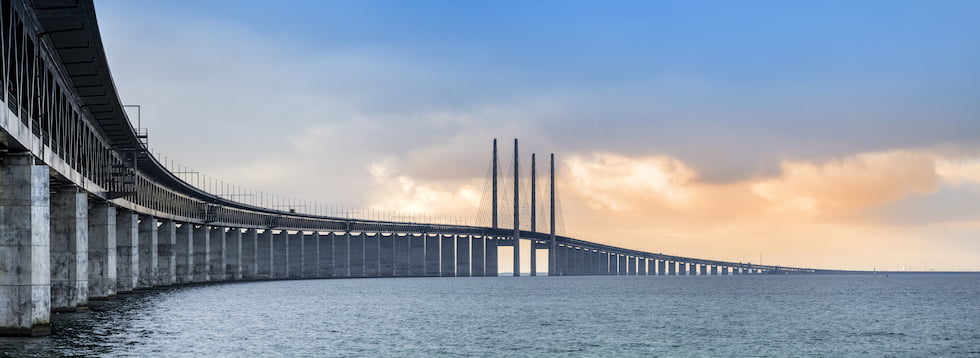
For several years, the pumps industry has been hoping to see infrastructure improvements bring new jobs, stir excitement about updated products and, of course, bring much-needed upgrades to facilities, pipes and service lines. With President Joe Biden’s announcement this spring about a potential $2 trillion infrastructure plan, hopes rose that these improvements might come to fruition. After months of negotiations, Biden announced this week that he has slashed his proposal to just $1 trillion.
“It is not a plan that tinkers around the edges,” Biden said, according to the New York Times. “It is a once-in-a-generation investment in America.”
In late April, Republican members of Congress unveiled an infrastructure package totaling $568 billion, according to CNBC.com. Here's how the GOP plan at that time compared to Biden's initial proposal:
- $299 billion for roads and bridges (Biden allocates $115 billion)
- $65 billion for broadband (Biden: $100 billion)
- $61 billion for public transit (Biden: $85 billion)
- $44 billion for airports (Biden: $25 billion)
- $35 billion for drinking water and wastewater systems (Biden: $111 billion)
- $20 billion for railways (Biden: $80 billion)
- $17 billion for ports and inland waterways (Biden: same)
- $13 billion for safety measures (Biden: $20 billion)
As the package is examined by both Democrats and Republicans, some on the left side of the aisle are worried that splitting the proposal into two pieces of legislation will put some items on the back burner, according to an article in The Hill in late April.
“I’m the most anxious member of the Democratic caucus. I want to get it done and done quickly,” Illinois Senator Dick Durbin, a Democrat, told The Hill about bipartisan infrastructure discussions.
America’s Report Card
In March, the American Society of Civil Engineers (ASCE) released its 2021 Infrastructure Report Card, assigning bridges, roads, wastewater systems and more in the U.S. a grade of C-. The grading scale shows that a C grade means the infrastructure is “in fair to good condition; it shows general signs of deterioration and requires attention. Some elements exhibit significant deficiencies in conditions and functionality, increasing vulnerability to risk.”
While the overall C- grade was a slight improvement from past ASCE report cards, some categories are still at the D level, including dams, hazardous waste, inland waterways and levees. Stormwater is also at a D, and wastewater is at a D+. Both drinking water and energy are at a C-.
Stormwater & Severe Weather Events
The U.S. stormwater sector faces an estimated $8.5 billion annual funding gap, according to a survey by the Water Environment Federation (WEF).
“The stormwater infrastructure that is vital to the health of our communities and our environment is in desperate need of increased and sustained investment,” WEF President Lynn Broaddus said. “Stormwater infrastructure is an integral part of our overall water infrastructure and it is imperative that it be included in any infrastructure package developed by the Biden administration and Congress.”
In addition to the funding gap, stormwater systems cited aging infrastructure and increasing regulations as challenges. Stormwater systems also reported needing assistance with technical resources for financing, asset management and watershed-based planning.
In the Biden plan, investments in infrastructure will be made to create better resiliency for increasingly severe floods, wildfires, hurricanes and other risks, according to The White House. In 2020, the United States endured 22 separate billion-dollar weather and climate disasters, costing $95 billion in damages to homes, businesses and public infrastructure.
In Louisiana, Hurricane Laura caused $19 billion of damage, resulting in broken water systems and a severely damaged electrical grid that impeded a quick recovery.
Every dollar spent on rebuilding infrastructure during the Biden administration will be used to prevent, reduce, and withstand the impacts of the climate crisis, the White House said. The Biden infrastructure plan is expected to: “Upgrade and modernize America’s drinking water, wastewater, and stormwater systems, tackle new contaminants, and support clean water infrastructure across rural America.”
Clean Drinking Water
Supporting clean water infrastructure is critical, as “an estimated 6 to 10 million homes still receive drinking water through lead pipes and service lines,” according to the White House. In Biden’s infrastructure plan, the $111 billion allocated for drinking and wastewater includes funds to replace 100% of the lead pipes and service lines in the U.S.
“Across the country, pipes and treatment plants are aging and polluted drinking water is endangering public health…The president’s investments in improving water infrastructure and replacing lead service lines will create good jobs, including union and prevailing wage jobs,” according to the White House.
In some parts of the U.S., drinking water systems can be up to 100 years old, according to the Centers for Disease Control and Prevention (CDC). The American Water Works Association (AWWA) cites that it would cost $1 trillion over the next 25 years to repair and expand the country’s drinking water systems “to meet the demands of a growing population.”
“The American Water Works Association appreciates the Biden administration’s recognition of the need to strongly reinvest in U.S. drinking water and wastewater infrastructure,” the AWWA said in an April statement about the American Jobs Plan. “Our nation’s water systems protect public health, safeguard the environment and allow our economy to prosper. It’s hard to imagine a more important federal investment.”
The ASCE also released a statement celebrating the American Jobs Plan in April. “ASCE urges Congress and the administration to now work together to develop a comprehensive, bipartisan, infrastructure bill that will set the plan in motion—rebuilding and modernizing our infrastructure systems while growing the economy, increasing public safety, and creating jobs and more resilient communities.”

